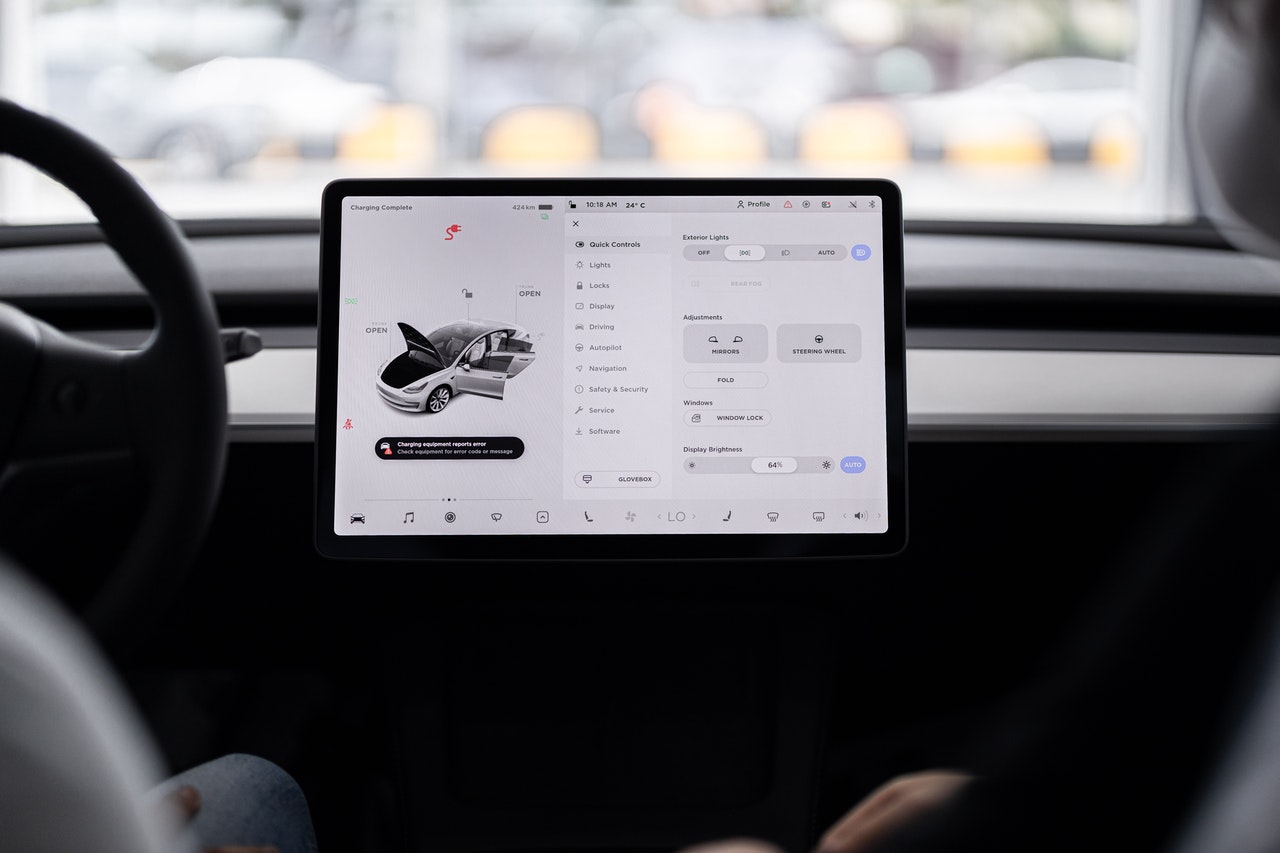Smart, self-driving cars are the future of transportation. Continue reading →


Smart, self-driving cars are the future of transportation. The idea behind them is really simple. You can get into a car, speak/type your destination, and the car would take you there while you take a nap, surf the web or read a book. Autonomous vehicles, which can perform actions without human intervention, are not science fiction anymore.
Self-driving cars use machine learning systems, artificial intelligence (AI), predictive algorithms, and hardware such as actuators, processors, and sensors to reach a destination. Sensors create a map of the immediate surroundings and video cameras read road signs and traffic lights, while at the same time detecting nearby pedestrians. Radars are used to also detect nearby cars while driving and parking.
The self-driving software processes all the signal responses from these devices and creates a custom set of directions for the car to follow. These instructions control the car’s actuators, which control steering, brakes, and acceleration. In addition, many other algorithms run in the background performing other tasks, such as navigation, object detection, and pattern recognition.
Self-driving cars use the Global Positioning System (GPS) for navigation. This means they use real-time satellite data to calculate distance and generate directions. Hence they can reach any destination quickly and accurately.
Self-driving cars also offer driver assistance, making it easier for drivers to recognize any potential dangers on the road. As a result, these cars help prevent crashes and accidents due to human errors. This can also potentially reduce costs associated with cars, such as accidental damage costs and insurance.
Standardized transportation by autonomous software also improves a vehicle’s fuel efficiency. Since the car utilizes fuel efficiently, its carbon emission is less than that of regular vehicles. In general, self-driving cars are more environmentally friendly than manual or automatic cars.
But one of the biggest advantages of self-driving cars is that they lead to less traffic on roads. If all the cars are driving efficiently, there won’t be any traffic or road rage incidents and you can even book shared vehicles since you don’t have to drive. Furthermore, self-driving cars offer a better and cheaper way to travel for the disabled and elderly, who cannot drive for themselves.


AI is revolutionizing the automobile industry, with several amazing advancements happening in this domain. Many global giants are investing in autonomous mobility algorithms and self-driving cars to make driverless transportation the new standard of commute.
Tesla is one of the major players in the field. Tesla’s autopilot is one of the most sophisticated self-driving software in the market. They also frequently release new features and patches for their products. These days Tesla is working on combining supercomputing with computer vision to allow self-driving cars like the Tesla Model 3 to process data quickly and make real-time decisions. This is called Project Dojo.
E-commerce giant Amazon, which depends on transportation for its distribution, is also looking into driverless vehicles for their product delivery. From driverless trucks to drone deliveries, Amazon is working its way towards full-scale automation and dispatch.
Waymo is another company that is at the forefront of autonomous vehicle manufacturing. A Google sibling company, Waymo produces different self-driving automobiles to address various customer needs, depending on their transportation requirements. In addition, they produce the world’s first self-driving car suitable for personal and commercial use.
Along with Jaguar, their vehicles have completed 1 billion testing miles in the USA. In addition, they are offered paid driverless rides in Phoenix and hauled freight in Texas using autonomous semi-trucks.
Automobile companies are always searching for ways to improve self-driving cars. As per this research paper, there is a need to combine logical reasoning with neutral learning for self-driving vehicles. This will allow self-driving cars to understand the world just like humans do. And they can recognize accidents before they happen.
So the question remains, what does the future of self-driving cars looks like? And what are companies trying to do in the near future to improve their products?
Many companies are trying to improve the UI and functionalities of self-driving cars. In the future, you would be able to use Wifi inside these cars. The car would also adapt to your preferences, and you would be able to personalize it by adding customizations.
Many companies are now working on updating legacy car software with AI features. For example, General Motors Co. and Ford now offer optional hands-free driving features. In the future, software patches for AI and transmission glitches will be common.
This will mean that car design and usage expectations will also change. For example, instead of city travel, you would be able to use cars for long-distance journeys. You also won’t need large parking spaces, since you can just summon a car whenever required.
For AI to run at its best, the data from different sources need to be merged in one database. This means that government agencies and private companies will collaborate to improve each other’s resources and products. Many countries such as China have already started this, and many others will follow suit.
Many companies are now working on introducing 5G communication. It can potentially be a way to communicate with autonomous vehicles and driverless cars.
The automobile industry has been shifting towards driverless cars for quite some time now. Many experts believe that within the next 10-15 years, there will be a full fleet of self-driving cars that can follow orders and perform actions on their own. Autonomous mobility will also transform our cities. The roads will be much safer and more pedestrianized. The long-term vision of car-manufacturing companies would be to open the market to the general public by reducing costs and improving features. These cars should also be able to communicate with pedestrians and perform functions without any human intervention or supervision. If this feels like fantasy, remember that there was a time when driverless cars were a fantasy too. The future will be here earlier than you imagine.
When you’re ready to upgrade, trusted vendors like ServerMonkey have your back with tested, enterprise-grade…
The best VPS rental choice depends on your specific needs and technical capabilities. Ukrainian companies…
Mental health practice management software supports therapy, privacy, and billing. OBGYN EMR tracks pregnancies, labs,…
Internal Medicine EHR systems manage broad care needs. Mental health practice management software keeps records…
Oncology clinics that use Oncology RCM, Oncology Practice Management Software and Pediatric EHR provide safer…
y implementing these best practices, you can improve the efficiency and reliability of your international…